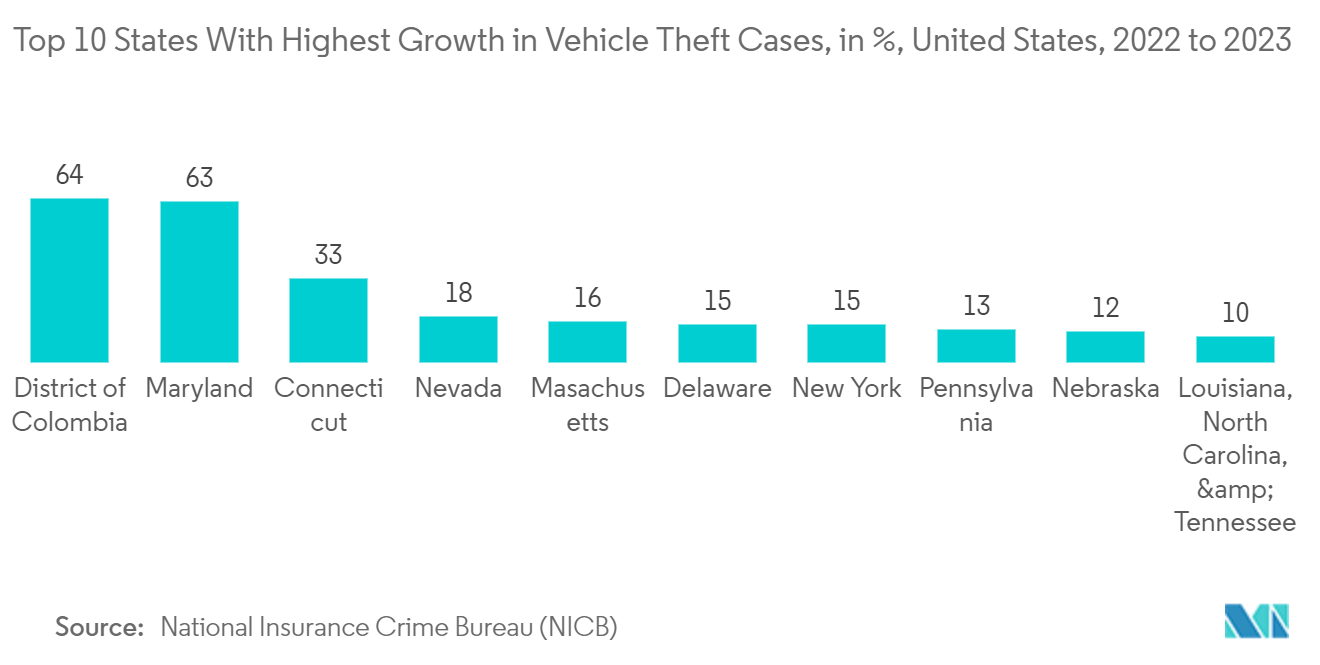Market Trends of United States Surveillance Camera Industry
IP-based Surveillance Cameras is Expected to Witness Growth at a Significant Rate
- IP-based surveillance cameras transmit video data over an internet network, outshining traditional analog systems in the US market. Their ascendancy is fueled by advanced features, high resolutions, and adaptability, resonating with a security-conscious market amidst technological strides and broadening sectoral adoption. These cameras offer HD and UHD video quality, outclassing analog counterparts with crisper, more detailed imagery. Boasting remote access, digital zoom, and seamless integration with security systems, IP cameras are functional and user-friendly. Their scalability further stands out, enabling system expansions without significant infrastructure overhauls.
- The surge in smart home tech and IoT has heightened the demand for IP cameras, seamlessly integrating into broader home security and automation setups. While the initial investment might be steeper, IP cameras promise long-term savings through easy installation, minimal cabling, and reduced maintenance. Organizations increasingly turn to IP-based security cameras with video analytics, enhancing real-time situational awareness, fortifying security, and gaining valuable operational insights. With analytics proving pivotal, the advent of 4K resolution cameras empowers providers to embed advanced features into their management software.
- Artificial intelligence is a standout trend, elevating functionalities like facial recognition, behavior analysis, and automated alerts. Businesses, especially those eyeing future readiness, gravitate towards AI-capable surveillance systems. Furthermore, Cloud-based solutions offer significant cost efficiencies, while operational technology costs can sometimes be hidden. Transitioning computing and video storage to the cloud typically results in 20-50% lower ownership costs than onsite systems. Eagle Eye Network, an American company, highlights these savings, noting that approximately 76% of security customers opt for subscription agreements.
- The trend towards cloud storage and management, which facilitates scalable and accessible video storage and analysis, is further propelling the IP camera market. Some VSaaS providers are sweetening the deal, offering multiyear subscriptions with price protection, a move that's resonating with customers, especially as higher-resolution cameras become more affordable. Eagle Eye Networks' data underscores this shift, revealing a three-fold increase in high-resolution IP security cameras over the past five years.
- With the crime rate increasing across different parts of the country, the demand for advanced surveillance systems is anticipated to grow, creating a conducive environment for the studied market's growth. For instance, according to the National Insurance Crime Bureau (NICB), in 2023, more than one million vehicle theft cases were reported, with overall vehicle thefts increasing by about 1 % nationwide. The district of Colombia reported the highest growth (64%) compared to the previous year.

Retail Sector is Expected to Witness Significant Demand
- In the United States, the retail sector is witnessing a pivotal shift towards adopting surveillance cameras. This move is primarily fueled by the imperatives of loss prevention, bolstering customer safety, streamlining operations, and delving into consumer behavior insights. These cameras are not just tools but the frontline defense for safeguarding assets, creating secure shopping environments, and fine-tuning store management.
- One of the primary drivers behind this surge in surveillance camera deployment is the urgent need to combat theft, shoplifting, and internal fraud. Moreover, retailers are increasingly leveraging these cameras to ensure the safety of both customers and staff, extending their surveillance to store premises and parking lots. Beyond security, these cameras are now integral in monitoring day-to-day store activities, managing queues, and optimizing staff deployment.
- The US National Retail Federation reports that retail crime costs the industry over USD 100 billion. In a 2023 survey by the NRF, 52% of responding retailers indicated they are boosting their technology and software budgets. The top 10 security measures retailers find most effective in curbing losses include CCTV and video surveillance and upgraded or integrated CCTV systems.
- Retailers are increasingly turning to emerging technologies for loss prevention. The study reveals that 37% of respondents are exploring artificial intelligence-based analytics for e-commerce fraud detection, with 13% already having these systems in place. Additionally, 35% are looking into body-worn cameras for their staff. While 18% have already deployed mobile surveillance units in their parking lots, another 10% are in the process, and 19% are considering this technology for their stores.
- Retailers are actively exploring emerging technologies. While just 3% have fully embraced facial recognition, a significant 40% are either researching, piloting, or already implementing facial recognition or feature-matching technologies, as per NRF. NRF projects a 2024 retail sales growth of 2.5% to 3.5%.
- Furthermore, according to the US Census Bureau, in 2023, total retail sales in the United States reached USD 7.24 trillion. Hence, the anticipated rise in retail sales, coupled with the surge in the adoption of advanced surveillance cameras, is poised to propel the market forward.


